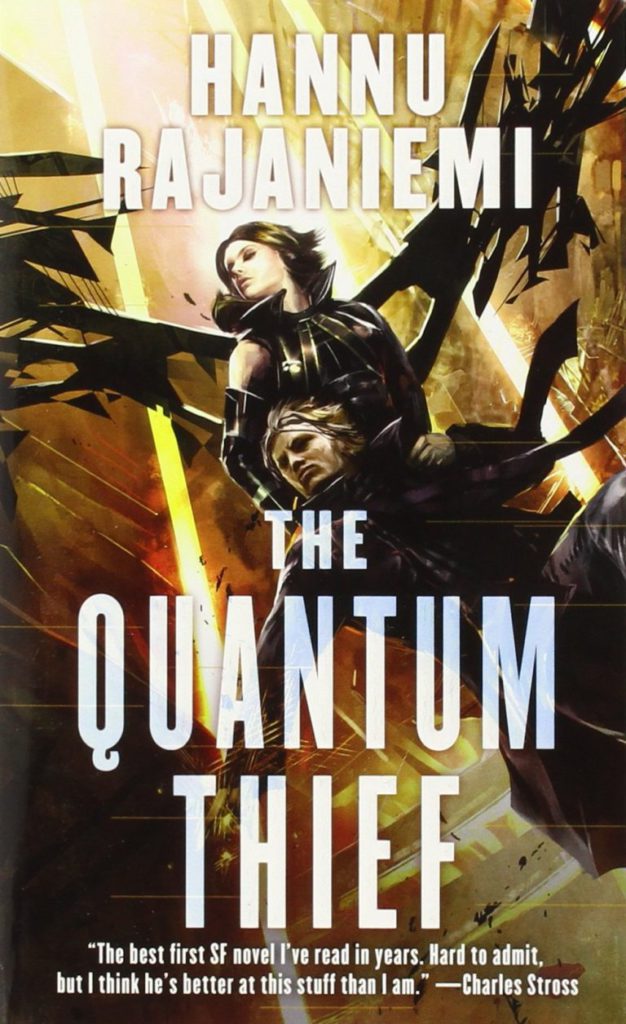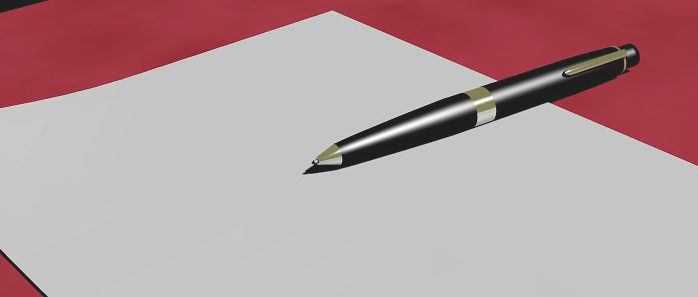The Quantum Thief, by Hannu Rajaniemi, is many things: a caper, a hard science fiction thriller, an action-adventure story, a cops and robbers tale, and a post-cyberpunk yarn. The novel came out several years ago (with two sequels to date), but I recently read it and was compelled to review it. The rest of my review is below the jump.
[SPOILERS AHEAD!]
We first meet our protagonist, Jean le Flambeur, in a Dilemma Prison. He is surrounded by trillions of copies of himself who are also his competitors. The antagonistic archons and warminds use game theory to create scenarios meant to slowly rehabilitate him. Good stuff.
Jean is soon broken out of prison by Mieli, a transhuman warrior from the Oort clouds. Her ship (sorry, spidership) Perhonen, has a personality of its own, and Mieli has an agenda for Jean. He has to steal something from Mars, but he has to reclaim his memories first.
By page 30, I was hooked by the central mystery (who the heck was Jean le Flambeur before his incarceration?) and the genius-level world-building, which is opaque and addictive simultaneously; words are tossed at the reader without much explanation: zoku, tzaddik, exomemory, spimescape, q-dots, qupting, guberniya, gevulot, Oubliette, Sobornost. It’s impressively dizzying.
We’re also told that Mars was once a Kingdom that underwent a revolution and now values individual privacy (protected by gevulot). A Collapse on Earth led to a burgeoning hegemony run by the transhuman Sobornost who are at war with the (also) transhuman zoku. Jean is soon pursued by Isidore Beautrelet, a wannabe-detective and vigilante on Oubliette, the moving city of Mars.
Beneath this glossy, fast-moving exterior lies a substrate of precisely-designed equations and diagrams to explain how the privacy of gevulot works, the specifics of the nanotechnology “combat fog,” and the physics behind the spimescape. If he were to “tell, not show,” the book would be diagrams and numbers. Quantum theory is amenable to metaphor (see: Schrödinger’s Cat Paradox), and so when words like “entanglement” and “superposition” are tossed out, writers without a science degree (*cough* like me *cough*) get excited and think of all kinds of ways to employ it in a futuristic setting. That sometimes results in writers treating quantum physics like magic. That’s something that Rajaniemi does not do. Rajaniemi has several advanced degrees in mathematics and physics, and he founded and sold a financial consultancy. (He also looks like either James Bond or a debonair James Bond villain; see below.) Of course, one physicist takes issue with Rajaniemi’s constructed science, particularly Rajaniemi’s “weaponized Boson-Einstein condensate.”

Rajaniemi’s background is another reason why the book is an original in the field. Rajaniemi is Finnish by birth, but the book’s marketing copy says he was “multilingual from an early age.” His background is important, I think, because the story is written by someone with a different cultural experience than mine (or many Americans). There are action scenes, noir scenes, and superhero scenes, but of the kind you’d find in a Besson film, or the first half of The Stranger, or Watchmen-era Alan Moore. There is also a chocolate subplot, and many of the characters have European names. That screams “European Scandinavia” to me! (Just joking. Sort of.) These are all things that help create verisimilitude. He tackles the singularity, transhumanism, and how flesh-and-blood humans fit into this world with the artistry of someone who has spent a long time thinking about his universe.
The most devastating commentary derives from his use of hacker and information security parlance to describe the kinds of attacks from the Sobornost and zoku. The reason, hinted at cleverly, is that both of these collectives have their origins in pre-Collapse Earth as MMORPGs and hacker outfits. Both groups have developed superhuman powers, and the god-like Sobornost have developed a particular disdain for anything different from themselves. There are also “gogols,” so named because of Gogol’s “dead souls,” or basically the uploaded consciousness of people who no longer have physical bodies.
That’s not to say there aren’t weaknesses in the novel. Many reviews have said this book is a game-changing masterpiece, but I think The Quantum Thief would be an equal to Neuromancer if it had stood alone. The ending sets up an obvious sequel that will explore who imprisoned Jean and what caused the Collapse. The cliffhanger detracts from the novel’s power.
Another weakness involves Mieli. She is described as drop-dead gorgeous and a super-badass, and she would probably be identified as a lesbian in our time since her soulmate is female (her Oortian culture is obviously different from our 21st century culture). I’m a fan of diversity in futuristic literature, including characters with a differing sexuality than my own; there were times that Mieli seemed created for the male gaze. She is the ultimate unobtainable female that men still want to leer at (one of her early scenes is post-sex afterglow). I take no issue with Rajaniemi for wanting to create the Ultimate Unobtainable Woman; sometimes, that’s just how the character works in a writer’s head. But what doesn’t ring true is how she saves Jean’s life at the end, calling him her brother-in-arms, especially after she spends much of the novel wondering why she doesn’t just kill him. Mieli starts off as a complex and savvy warrior, and this last-minute sentimentality is contrived. There are a few cool scenes where he delves into her motivations and background, but I feel that Mieli deserved to be more than Jean’s helpmeet.
Finally, there is a “kitchen sink” quality to the novel; Rajaniemi weaves in a police procedural/noir subplot with Isidore (complete with superheroes!) These mini-mysteries are taut mini-novels themselves, and Rajaniemi acquits himself well by dabbling in that genre, but they do make your head spin a bit. The superhero subplot, in particular, seems to be an afterthought and could have been cut down (or cut out).
I am in awe of Rajaniemi’s world-building. I don’t have his level of advanced education, but he is my benchmark for describing the future and technology as a lived reality. The novel’s future seems plausible because of Rajaniemi’s incredibly hard work on the science undergirding the story. He also knows how to write one hell of a fight scene.
Highly Recommended. 4/5 Stars.



